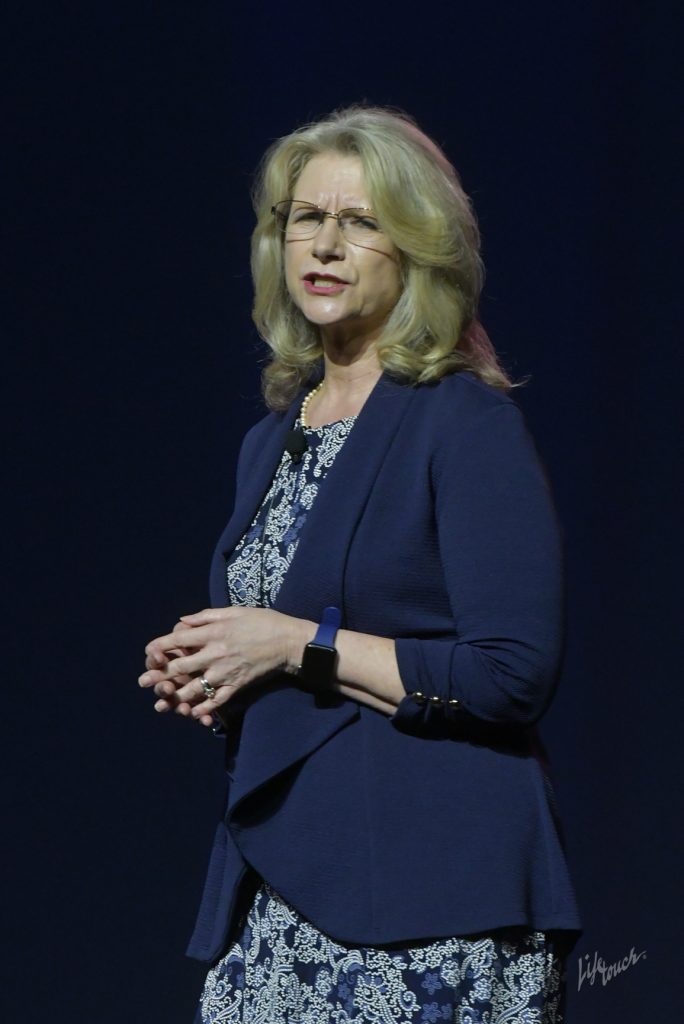While labeling the obsession toward school choice a misguided pursuit, AASA President Gail Pletnick called on her colleagues Thursday to move with urgency “to redefine, redesign and re-imagine education” by personalizing the experience for every child.
In her presidential address at the 1st General Session of the AASA national conference, Pletnick, superintendent of the Dysart Unified Schools in Surprise, Ariz., challenged fellow superintendents not to get caught up in the political debates over choices between public and private education “and so many other silver bullet fixes that it detracts from the real work to be done.”
Rather, she offered, school districts would do well to follow in the example of those that are redefining what it means to be career and college ready and moving away from one-size-fits-all approaches to teaching and learning. She showed a series of short videos that illustrated existing school programs that were personalizing instruction for students by taking advantage of digital tools.
“Although each profile reflects the unique needs of the community it serves, you see some commonalities because we know to prepare students for success we not only need to ensure a strong academic or knowledge base, but we must ensure the students leave our systems with the skills and those dispositions that will enable them to adjust, adapt and succeed in a world” characterized by rapid technological change, said Pletnick.
A few excerpts from her AASA conference address follow.
- “I propose this crazy debate over school choice is just that — crazy. When we engage in those discussions we are still talking about a school-centered educational design rather than a student-centered design. Think about it — students and families are told they should have the choice to send their child to a school with — let’s say a traditional approach or a project-based approach or a one-to-one initiative … The descriptors we use for schools of choice go on and on, but the reality is that the focus is still on the school and its approach and fitting the student into that school. That is not how we should be re-imagining education.”
- “Let’s make school a place where each student has whatever tools that best meet their needs, where the instructional approaches fit the individual, where students have options and opportunities to show mastery and growth in relevant ways — now that is choice, student-centered choice, and that choice should be available to students every day in every school. I have another name for that type of choice — personalized learning.”
- “There are those who would say I just described utopia and that is not possible in the U.S. educational system. Well it is, but don’t take my word for it.”
Pletnick said she has interacted with AASA members from across this nation who have been involved in the Digital Consortium and Personalized Learning Cohort. “I have witnessed dedicated superintendents leading transformative change focused on redesigning our system to meet the needs of each and every student,” she said. “AASA has worked to create powerful opportunities to grow our networks and to support superintendents in this work to successfully transform schools. AASA is not stopping there, AASA works to reach out and connect all members to the resources and information they need.”
This work to redefine, redesign and re-imagine work is happening in rural, suburban and urban districts with a few hundred students to districts with 100,000 or more students, she said in her speech.
“We have much to be proud of in our public education systems and should celebrate the great work being done, but we can’t settle on just some examples of this transformation,” Pletnick said. “This change must happen in every school for every child and we need to share that great work. We love public education because it provides opportunities for each and every child. As public school leaders, we must stand for educational equity for all students in this nation.”

